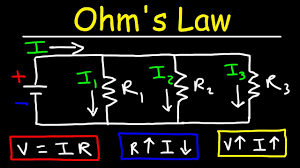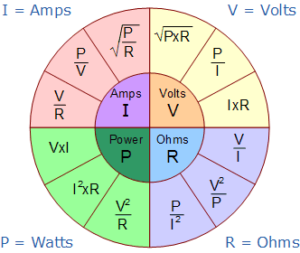Education
Ohm’s Law: Formula, Functions & Limitations

Ohm’s law states that the potential difference or the voltage between two points is directly proportional to the current passing through the resistance. The voltage is also directly proportional to the resistance of the circuit. This relationship between resistance, current and voltage was discovered by German scientist Georg Simon Ohm.
Formula Of Ohm’s Law
The formula of Ohm’s Law stating the relationship between current, voltage and resistance is:
V = I*R
Where:
- V = Voltage
- I = Current
- R = Resistance
Ohm’s law formula is known to be an essential law of electricity as it evaluates the power, voltage, efficiency, resistance and current of any element.
- Current: Current is a flow of positive charge from a negative charge source. It is known to be a natural property due to its inclination towards aspects like the size. The units for current are C/s. ‘C’ is the amount of charge and ‘s’ is per unit time.
- Voltage: Voltage is the total amount of work required to move a charge. It measures the electric potential that an object possesses in a reference to a charge. The unit for voltage is J/C
- Resistance: Resistance is an opposition to the movement of charge. It has similarities with the effects of friction. The units for resistance are Ohms.
Ohm’s Law Pie Chart
Functions Of Ohm’s Law
Ohm’s law is a derivation is based on a relationship between current and voltage. It’s majorly used in the electrical industry. Besides, it is also used to create polymers, molecules, chemical bonds with atoms and many more. It provides research applications like energy storage, materials chemistry, organic chemistry, and more.
Ohm’s Law Limitations
Ohm’s law limitations are specified below:
- The calculations become complex when circuitry is advanced with electrochemical phenomena.
- Ohm’s law doesn’t fit unilateral networks because the network consists of transistors and diode and current flows in one direction.
- Ohm’s law is not applicable to the non-linear elements because the current is not exactly proportional to the applied voltage.
- The change in temperature causes fluctuations in calculations.
- Ohm’s law is not applicable to non-metallic conductors.
Applications Of Ohm’s Law
The applications of Ohm’s law are as specified:
- Ohm’s law simplifies the calculations of power and current.
- Ohm’s law helps in maintaining the voltage between electrical components.
- Ohm’s law is required to redirect the current in DC ammeters and DC shunts.
Solved Example Of Ohm’s Law
Ques. An electronic device has a resistance of 30 ohms and a current of 25 A. Calculate the voltage across the device.
Soln. As we know,
Current, resistance and voltage are related to the ohms law
Given: Resistance – 30 ohms and Current – 25 A
As we know;
Ohms law formula is: V = I*R
On putting into the formula,
V = 25*30
V = 750
= 750 V
Therefore, the voltage across the device is 750V.
-
Blog1 year ago
MyCSULB: Login to CSULB Student and Employee Portal – MyCSULB 2023
-
Android App3 years ago
Cqatest App What is It
-
Android1 year ago
What Is content://com.android.browser.home/ All About in 2023? Set Up content com android browser home
-
Software2 years ago
A Guide For Better Cybersecurity & Data Protection For Your Devices
-
Latest News2 years ago
Soap2day Similar Sites And Alternatives To Watch Free Movies
-
Android2 years ago
What is OMACP And How To Remove It? Easy Guide OMACP 2022
-
Android3 years ago
What is org.codeaurora.snapcam?
-
Business2 years ago
Know Your Business (KYB) Process – Critical Component For Partnerships






















